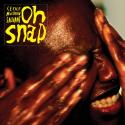It was Brian Wilson who started it. Eight years ago he toured Britain with a show that had at its heart a triumphant performance of his classic Beach Boys album, Pet Sounds, played – in a phrase that has become de rigueur when describing such events – in its entirety. Many more followed suit: David Bowie with Low, Sparks with Kimono My House, Lou Reed with Berlin (which in turn became a terrific Julian Schnabel film), while later this year Primal Scream will perform their epic Screamadelica album at the Olympia in London. And now John Cale is at it.
Last year in Cardiff Cale mounted a show featuring a performance of his classic 1973 album, Paris 1919, and here at the Royal Festival Hall the craggy Welshman repeated the trick, playing the album, as he announced at the start of the evening, “in its entirety”. And very lovely it was, too. Paris 1919 is easily the most accessible album from a man notorious for his seriousness and musical bleakness – it’s melodic, lush with strings, pleasing on the ear – and Festival Hall was the perfect place to mount such an undertaking: an immaculate acoustic, a stage big enough to accommodate the strings and brass of the Heritage Orchestra, a suitably serious ambience.
Slightly annoyingly for those of us with a disposition towards authenticity (some might call it pedantry), Cale toyed with the album’s running order, rejigging it to place “Macbeth” at the end. This was presumably so that it would serve as the big rock-out finale. In fact it was too restrained, too polite, lacking the glam-rock stomp of the recorded version.
But the rest of it was gorgeous. Cale – who managed to look both dapper and dishevelled in a grey suit, white shirt with the top button undone, skinny silver tie, his long hair streaked badgerishly with a flash of white, a little tufty goatee on his chin – stood throughout behind his Kurzweil keyboard, backed by his three-piece band and the unfesasibly young players of the Heritage Orchestra. His voice has never been the most elegant of instruments, but here he sounded remarkably clear and true for a man of 67. He even hit the high notes – just – on “Andalucia”.
The highlight of this section of the show for me was the title track. Although the drummer had put his sticks down for this one, it turned out to be the most rhythmic, propulsive song of the night – the thrummingly insistent strings forming an urgent counterpoint to Cale’s floating vocal melody.
The Paris 1919 album formed the first part of a show that went on to delve into Cale’s back catalogue, and to explore the darker side of the man. “Amsterdam” was drifty and sinister. “Femme Fatale” – the night’s only acknowledgement that Cale used to be a in a group called the Velvet Underground – was a bit too plinky and angular for my taste. But “Heartbreak Hotel”, Cale’s vision of Lonely Street as a place of screams and nightmares, was genuinely scary, all clanging synth and howling guitar. “Fear”, meanwhile, was glorious, its almost jaunty keyboard riff becoming deliciously nasty as the song progressed.
Relief from all this mental torture came in the shape of the dreamy “Hedda Gabler”, with the strings back in action, and “Dirty Ass Rock’n’Roll”, in which the band finally got a chance to really go for it. Cale, now sans jacket or tie, was rocking on his heels, his hair swinging, having fun. And once, right at the death, he even grinned.
Watch a clip of John Cale performing Paris 1919 at the Paradiso in Amsterdam:















Add comment